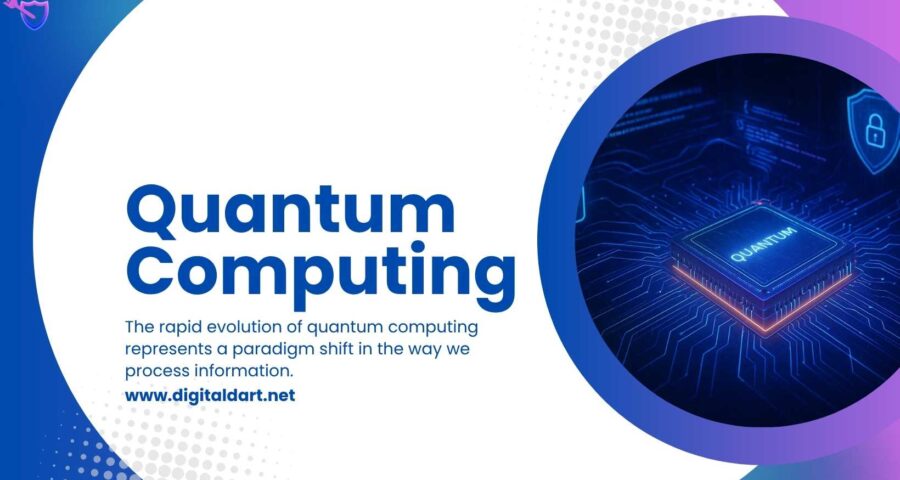The rapid evolution of quantum computing represents a paradigm shift in the way we process information. With the potential to solve complex problems exponentially faster than traditional computers, quantum computing holds transformative power across various sectors. However, with this immense power comes a new wave of cybersecurity threats and challenges. This article delves into the fundamentals of quantum computing, its potential to compromise existing encryption methods, and the proactive steps organizations can take now to ensure their cybersecurity is future-ready.
What is Quantum Computing?
Quantum computing is a field of computing based on the principles of quantum mechanics, which govern the behavior of particles at the atomic and subatomic levels. Quantum computers differ from traditional systems by using qubits, which, due to superposition, can represent both 0 and 1 at the same time—enabling massively parallel processing.
Another key principle is entanglement, which allows qubits that are entangled to be linked, such that the state of one can depend on the state of another—even at great distances. These properties allow quantum computers to perform computations at speeds unimaginable with classical computers.
Why Quantum Computing Threatens Current Cryptography
Most of today’s internet security relies on cryptographic algorithms that would take classical computers thousands of years to crack. However, quantum computers could break these systems in a matter of hours or even minutes.
1. RSA and Asymmetric Encryption Vulnerability
RSA, ECC (Elliptic Curve Cryptography), and similar public-key cryptosystems are foundational to secure digital communications. Conventional cryptographic methods depend on the computational difficulty of factoring large numbers or tackling discrete logarithms—problems that are currently time-consuming for classical machines.
Quantum systems equipped with Shor’s Algorithm can break down large integers significantly faster than classical methods, rendering RSA and ECC encryption practically ineffective.
2. Symmetric Key Cryptography
Quantum computing also impacts symmetric encryption methods (like AES). While these aren’t as immediately vulnerable as asymmetric methods, Grover’s Algorithm allows quantum computers to reduce the security level of symmetric keys by half. To illustrate, a 256-bit symmetric key would effectively provide just 128 bits of protection when faced with a quantum-powered brute-force attack.
Real-World Implications for Cybersecurity
1. Massive Data Breaches
If quantum computers can crack current encryption standards, everything from banking transactions to confidential government communications could be exposed.
2. Harvest Now, Decrypt Later (HNDL)
Hackers are already collecting encrypted data today with the intention of decrypting it in the future when quantum computers are available. This tactic makes sensitive data vulnerable, even if it is currently secure.
3. Digital Signatures at Risk
Digital signatures, which authenticate identities and documents, are also based on asymmetric cryptography. If compromised, attackers could impersonate trusted parties.
Preparing for the Quantum Threat
1. Post-Quantum Cryptography (PQC)
Post-quantum cryptography (PQC) includes encryption techniques designed to withstand quantum threats while remaining compatible with current computer systems. NIST is actively working to establish formal standards for these next-gen algorithms. Businesses should start experimenting with these now to ensure future compatibility.
2. Cryptographic Agility
Organizations need to implement systems that are cryptographically agile—capable of switching between encryption methods without overhauling the entire infrastructure. This flexibility ensures easier adaptation as post-quantum cryptographic protocols continue to develop and mature.
3. Risk Assessment and Inventory
Identify and catalog all systems and applications relying on vulnerable cryptographic methods. Understand which data has a long lifespan (e.g., medical records, legal contracts) and prioritize its protection.
4. Vendor and Partner Readiness
Ensure that your third-party vendors and partners are also preparing for a post-quantum world. One weak link in the supply chain can jeopardize the entire ecosystem.
The Role of VPNs in a Quantum World
Virtual Private Networks (VPNs) are a critical part of cybersecurity infrastructure. However, many existing VPNs use cryptographic protocols like RSA and ECC. As these become vulnerable, VPN services must evolve.
Quantum-Resistant VPNs
Forward-looking VPN providers like Digital Dart are exploring or already implementing PQC protocols to ensure future-proof encryption. Choosing a VPN that is actively investing in quantum-safe solutions is key to maintaining data privacy in the coming years.
Is Quantum Computing a Threat Today?
As of 2025, quantum computers powerful enough to break current encryption don’t yet exist. However, the pace of development is accelerating, and experts estimate that we could see quantum threats materialize within the next 10-20 years. Considering long-term data security now is crucial to avoid future vulnerabilities.
Conclusion: Get Quantum-Ready with Digital Dart
Quantum computing is not just a theoretical concept—it’s a fast-approaching reality that could redefine cybersecurity as we know it. The time to act is now. By adopting cryptographic agility, exploring post-quantum cryptography, and partnering with forward-thinking security providers, you can ensure that your data stays protected well into the future.
At Digital Dart, we are committed to staying ahead of cybersecurity trends. Our VPN solutions are built with tomorrow’s threats in mind, offering cutting-edge protection against both current and emerging risks.
Secure your digital future today with Digital Dart. Contact us now to explore our quantum-ready VPN solutions.


Leave a Reply